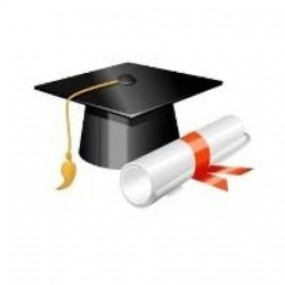ABSTRACT
Study of the
comic elements in Wole Soyinka's "The Trials of Brother Jero andThe Lion
and the Jewel. The literature is said to be interpretation of life itself and
it's in three segment, which are prose, Drama and Poetry.
Drama which
is the most relevant on this study. Drama has been defined as a literary
composition that tells a story usually representing human conflict by means of
dialogue and action as portrayed by Wole Soyinka in “Trial of Brother Jero and
The Lion and the Jewel.
Soyinka uses
comic element to project and achieved his aim without jeopardizing the message
intended to the audience. For instance "Trial of Brother Jero" where
he portrayed the lust of Brother Jero for women, especially at the beach and
the mocking of his followers prayer by referring to them speaking Jabber and in
The Lion and the Jewel where Soyinka portrayed Baroka speaking both pidgin and
English together like "guru m morin" and also mocking stance of
Lakunle whom he portrayed to represent the western culture.
For instance
when Lakunle tries to carry a pale of water from Sidi head and which he
eventually pour the water on his body.
Soyinka lets
us know that Comic Is not only by oral but also by action, as we can see in
Trial of Brother Jero and The Lion and the Jewel.
TABLE OF CONTENTS
CHAPTER ONE:
INTRODUCTION
1.1 Comedy
1.2 Comic element
CHAPTER TWO
THE TRIALS OF BROTHER JERO
2.1 Synopsis
2.2 Religion as Perceived by the Society
2.3 Jero as a Fake Prophet
2.4 Chume as a Gullible Follower
CHAPTER THREE
THE LION AND THE JEWEL
3.1 Synopsis
3.2 Culture as perceived by the society
3.3 Baroka’s Craftiness
3.4 Lakunle’s Superficiality
CHAPTER FOUR
Conclusion
References
Bibliography
CHAPTER ONE
INTRODUCTION
1.0 BACKGROND TO THE STUDY
The history of literature can be
traced to the ancient civilization of Egypt. It began as representation of
ideas on rocks, in caves, in motifs and other means of conveying ideas. But
inspite of the diversity of communicating devices, they all talked about
situations. This continued and evolved through the years to the broad category
we now team "Literature".
Literature as mentioned is a vast but
succinctly. We can view it as a body of writing by a people or by peoples using
the same language. It has received different definitions from various writers.
Literature has been described as
anything written as an interpretation of life. It has also been defined as the
best word in the best order. Another definition see literature has an
expression the temper of an age in terms of imaginative art.
Literature as terms emerged from the
Latin word "Littera" which means letter of the alphabet. This of
course means writing as an art, started with the Egyptians (Hieroglyphics)
before it became adopted in other cultures like the Greek and French symbols
were the initial forms of writing. Situations and activities were highlighted
in caves in form of symbols. Paintings and line etching as means of
communication and like literature of today, this means of communication was
used to inform us and depict real life situations which is the essence of
literature.
Over the years literature has
continued to play this role effectively. To this effect it has been segmented
into three major genres: Drama, Poetry and Prose of this three, drama is the
most relevant to this paper.
Drama captures real life situations
and displays them on stage for corrective purposes. A Greek term which means
"action" drama can be described as a form of literature intend to be
interpreted to an audience by actors who impersonate the characters, recite the
speeches and perform the actions of the story.
Drama has been defined as a literary
composition that tells a story usually representing human conflict by means of
dialog and action to be performed upon the stage yet another description of
drama is that it is the creative creation of authors, actors and audience.
Because drama is used to portray real
situations, these are usually highlighted to an audience who are the real people.
The beginning and the end of the business from the author's point of view is
the art of making the audience believe that real things are happening to real
people (Bernard Shaw).
Drama was necessitated by the fact
that it had a more potent impact on an audience. The ear\test forms of drama
were tragic because they portrayed the particular era in which they were
performed and therefore were more relevant as tragic.
Two types of drama are generally
acknowledging comedy which can briefly be described as any play which ends
happily and tragedy which ends unhappily.
The drama seems to have originated in
religious tribal dance such as existed among primitive peoples today. There is
a controversy as to the origin of drama: Egypt or Greece. But the first crude
drama, whether Egyptian or Greek, told stories and legends of some gods, having
originated in rites of worship held in the god's honour.
Drama is a form of expression peculiar
to no race or epoch. Some form of drama or the other is found in every
society-primitive and civilized and has served wide variety of functions in the
society.
The dramatic pieces capture a
particular time-frame of human existence because they tend to document h6tory a
peculiar to a people. In achieving this, they employ different plays can
satirize society, or they can gently illuminate of human weaknesses; they can
define the greatness and the limitation of man in tragedy, or as in modern
naturalistic playwriting probe man's mind.
In summary, drama is aimed at either
one or more of entertainment ritual celebration and promulgation of an idea. Drama
has the widest range of all arts. This is because it not only represents life
but is also a way of seeing life. There are some common features in drama the
play tells its tales by migration behavior a situation must be represented or
the stage often play describes its style up which the mood quality of illusion
degree of fantasy or realism are embedded. The languages of drama ranges from
intensely theatrical to an almost exact reproduction of real life. Another
major component of drama is conflict which is clash of ideas and will. The
resolution of the conflict usually marks the ends of the plays.
The deeper and more important the
conflict is to the spectators. The greater the worth of the drama. As a matter
of fact, intensity through concentration is an absolute law of the stage. A
good drama or play does three basic things: entertainment instruction and
exultation.
As mentioned earlier there are two
main categories of drama of which comedy is one. The other tragedy.
Although tragedy IS often used loosely
used to describe any sort of disaster or misfortune, it is actually a work of
art that probes with high seriousness questions concerning the role of man in
the universe. Tragedy deals with the rebellious spirit in man which resist the
limitations of being human.
The history of tragedy can be traced
to the Greek Dionysian festivals of the 5th century BC. In the Aristotelian
view, tragedy imitates men who are better than the average and deals with
personages of high estates and matters of great public importance. Tragedy on
the whole deals with issues that affect man in a serious manner.
1.1 COMEDY
Eons ago comedy was merely an art
form for entertainment coined from the Greek word komoidia which means merry
making. According to modern tradition,
comedy was type of drama whose chief objective was to amuse. But in the midst of laughter comedy can raise
surprisingly serious questions. We see
therefore, that comedy can be both critical and playful.
The term comedy has passed through
various shades of meaning. In the middle
ages, it simply meant a story with a happy ending; subsequently, the term was
applied to mystery plays with a happy ending.
Comedy has been defined as many comic
or ludicrous incident or series of incident of a form of dram that deals with
humorous or ridiculous aspects of human behavior of a dramatic piece of
pleasant or humorous character a story with a happy ending an incident
suggesting comic treatment.
Deeper definitions of comedy have
however produced statements describing comedy as vehicle of corrective satire.
Comedy (says Aristotle) is an
imitation of the worst sort of people in respect to their manners. They must be exposed after a ridiculous
manner. For men are to be laugh out of
their vices in comedy.
The business of comedy, according to
Sir Richard is to render vice ridiculous, to expose it to public decision and
contempt, and to make men ashamed of vile and sordid actions. James Drake also agrees that the business of
comedy is to recommend virtue and discountenance vice.
The origin of comedy date back to the
rituals in honour of the Greek god of vegetation. Dionysius’ Comus ode’ which was the term used
to refer to the songs sung during the festivals was what was later called
comedy. The term then became applied to
the satire plays of Aristophanes and writes like Plautus and Terence.
Comedy as a word can be concerned by
derivation to the Greek verb meaning to revel which enable as to bind up the
origin of comedy with vegetation rituals.
As an art form however, comedy has a
lot of devices as its disposal to achieve effectiveness in exploring the
concept of didacticism because there is always a moral behind all the laughter.
Some views of the aims of comedy
claim that comedy criticizes the finite for not being infinite. Comedy provoked
laughter at the world which man has made himself in his conscious activity.
Hegel Comedy consists of the indirect affirmation of the ideal logical order by
means of derogation of the limited orders of actuality.
Chief among these device for
didacticism are comic effects and "epigrams" which are comic
situations in the actions of the dramatists and witty remarks in their speeches
respectively. These devices make it distinct. Though comedy's message is
usually subliminal, that is not easily seen on the surface level because its
comical effects temporarily hide it, it is one of the most powerful literary
tools didacticism today.
Comedy has been associated with
laughter but the Idea behind all the laughter varies according to the attitude
of the author. The author's attitude towards the subject of discussion can be
for different purposes to ridicule a person, satirise a society or conventional
way of doing things; it can be on love or romance and so on. Laughter as a
common criterion in comedy is therefore just a means to an end. The aim of most
writers of comedy is to present situations concepts and lines apt to excite
their audience's facility of laughter.
Sir Philip Sidney observed that in
higher forms of the comic there is more delight than laughter.
The comic artist's purpose is mirror
the society's follies and vices hoping that they will, as a result be mended.
The comic drama takes on the features of satire as it fixes on professions of
virtue and practice that contradict them.
Satiric comedy dramatizes the discrepancy between the ideal and the reality
the pretensions that would mask reality’s hollowness and viciousness.
The most important English
renaissance statement concerning comedy is that of Sir Philip Sidney in The
defense of posies (1595)
Comedy is an
imitation of common errors of our life, which (the comic dramatist) represents
in the most ridiculous and scornful sort that may be so as it is impossible
that any beholder can be content to such a one.
Comedy in Africa began a while ago as
a ritualistic and royalty tool.
In ancient African civilization, festivals,
fiestas and yearly rituals to gods took place. Processions were also a part of
the lives of these people. The activities were spiced with dance, music and
folklore. Mime was also an important part the festivals. Mimesis was meant to
be a span of bout five to ten minutes or more showing life in a light way.
Because it is a silent act, it depends on rhythmic body movement and gesture to
give information and messages. It was from this mimetic form that comedy sprang
up as a form of drama.
Today comedy in African context as
with the past reflects the peculiar aspects of a society. It looks at the
society through an intellectual microscope, discerns its ills and puts it
forward in a laughable manner.
There are different media of comedy,
mimesis as earlier mentioned is one of such it parodies the good or bad events
in the society, highlighting them to an audience. It is mainly silent and more
descriptive. It ushered in theatre groups and itinerant entertainers.
Comedy could also be written for
performance on stage. Here action is combined with speech. Some plays are also
published by notable authors the satire work parade themes ranging from good to
evil. Some note worthy authors in this include Ola Rotimi, Femi Osofisan and
Wole Soyinka.
The establishment, in 1948, of
University colleges at Accra (Ghana) and Ibadan (Nigeria) gave impetus to
poetry, the novel and drama in the 1950's and 60's. The most intense activity
was in Nigeria, the Igbo proving particularly profile with writers like Cyprian
Ekwensi- Jagua Nana (1961). Onuora Nzekwu with Wand of Noble wood,
(1961) and Nkem Nwankwo Danda (1964) Wole Soyinka is however the main
playwright for this paper.
Akinwande Oluwole Soyinka was born on
the 13th of July 1934 In Abeokuta, Nigeria. He is a playwright, poet, novelist
and critic. He received the Noble prize for literature in 1986 (the first
African to win it). Soyinka attended Government College and University College
in Ibadan before graduating in English in 1958 from the University of Leeds in
England.
Upon his return to Nigeria, he
founded a theatre; the 1960 mask (later the Orisun theatre) and wrote his first
important play, A Dance of the Forests for the Nigerian independence
celebrations. The play satirizes the fledging nations by stripping it of
romantic legends and showing no great difference between the past and present.
In the plays of a lighter vein, he
made fun of pompous, westernized school teachers as in The Lion and The
Jewel (first performed in Ibadan, 1959) and published 1963 and the mocked
the clever preacher of upstart prayer churches who exploit their parishioners
as in The Trails of Brother Jero and Jero’s Metamorphosis (1972).
Soyinka's work reflect the
complexities facing an African playwright writing in English moving from
naturalistic treatment of his subjects to a profoundly Yoruba view of universal
themes. His early comic satires, The Lion and The Jewel and The
Trials of Brother Jero are popular with all levels of English speaking
audiences, but his later works were verbally and philosophically complex, so
they are for an intellectual elite.
Powerful statement on cultural
conflict is made in The Strong Breed (1963) and Death and The King’s
Horseman (1975) while he had political satires in Kong's Harvest
(1965). A dance of the Forests
(1963) showed dramatic contrast of life in Africa through the complex Yoruba
mythology.
Wole Soyinka has contributed to all
literary genres Including both tragedy and comedy in drama. Soyinka's writing
is very thorough as he touches on every aspects of man's Itte relevant to his
existence, social, political and religious. One thing that is noticeable in
Wole Soyinka work is that he does not deviate from cultural values rather uses
the theme to enlighten his readers. Soyinka propagates desalination from our
traditional values. He goes for originality in his works. Even when he borrows
from myths or legends, he stamps the work with something that is unique to him.
For' example the name Baroka in The Lion and Jewel cannot be tied to any
particular ethnic group. As described by Bola Ige ... Even the literary pieces
Soyinka plucks out and hands to you are not found anywhere else.
1.2 COSMIC ELEMENT
Cosmic elements are devices that are
employed to highlight situations in a work of comedy to create cosmic effects.
They are usually less dialogic than active.
In a work of art especially the genre
of force, comic effects are amply used. This is quite distinct from the
ordinary comic work of literature which has a sprinkling of conic effects in
its dialogic and its actions. However, the essence here is not the
effectiveness in the particular work in which it is used in this study. We shall
critically analyze comic effects and also its functions in the comic genre of
literature.
Ideally comic effects as literary
device can be seen from two perspectives.
Firstly, in the utterances of the
character with humour and secondly in the actions of the various characters. In
the first instance, comic elements can be found in the use of pun, fragmentary
statements, exclamations and asides (side remarks).
Some examples can be found in Wole
Soyinka's The Trials of Brother Jero
In Brother Jero's opening remarks.
I am prophet.... You have probably
Seen many of us……. some
prophets
Could name ……… Women penitent to shake
Their bosoms
The irony of women penitents shaking
their bosoms is hilarious. Also when he makes a list of churches fighting for
land, the names re funny.
The Brotherhood of Jehu ......... sister of
Judgment day……… The
Heavenly cowboys
Amope’s exchange with her husband
tone, the of martyrdom she uses is come because it makes everything
exaggerated. Also he exchange of results with the fish-seller is come
Go on and abuse me ......... all I wanted was
a few of' your miserable fish …….. Cross-eyed wretch pauper
Brother Jero’s prayer sequence with his followers are also comical for
example when chume prays with him over his weakness with women.
Je- e- esu. Je - e e - esu. Je - e - esu. Help am
Abraka..... Hebra...... Hebra .
Also in The Lion and The Jewel Soyinka shows how comic effects can
be achieved through the words of the characters.
Lakunle’s hesitation at calling Sidi’s breast what it is when he corrects
her about dressing is funny for a grown man.
A grown up girl must always cover up
her .... shoulder
The hesitation creates a comic
effect. Also has stupid display of high sounding words makes him sound funny.
Barbaric……accursed……excommunicated……Retrogress
Baroka's use of Yoruba and pidgin
English mixed with proper English produces a comic effect.
Guru morin Guru monn ngh hn! Alakowe…….Guru morin
Lakunle's proverbs about the stewpot and tire is funny
Have you no shame at your age licking my bottom?
She was tackled all the same
When the character insult themselves,
their choice of words is highly comical
sadiku says to Lakunle,
is this your doing, you Popinjay?
watch your wagging tongue, you uniformed creature
Lakunle' says to Sadiku
this is my plan you withered face
must every ward leak out of you
As surely as final drops of mother's
milk oozed from your flattened breast generations
ago"
Baroka says of the wrestler
Only yesterday, this son of I-suspect
A python for a mother and fathered
beyond doubt by a blubber-bottomed baboom
The allusion to sexual imageries is
also comic. All these contribute to
creating comic effects through speech.
On the other hand comic element can
be exhibited in actions of the character.
In The Trials of brother Jero for
instance. Amope and Chume's journey to
Brother Jero's house. The Description of Chume's posture
a cycle is ridden on stage. The rider is
shortish man: his feet barely touch the pedals.
Amope's tone martyrdom at the sudden
jerking of the bicycle and she has already begun to limp because of a landing
no worse than an ordinary one.
When Brother Jero tries to sneak past
Amope, she asks him where he thinks he is going without looking back.
They are very comic.
Jero's encounter with the woman that
was chasing the drummer boy is another comic instance.
Also when Chume finds one jewel is a
fake and comes after him the chase all around the stage produces a comic
effect.
In The Lion and The Jewel,
Lakunle's action trying to get the pail from sidi and spilling water all over
himself is comic. We also find a comic instance
When Lakunle playfully pinches the
dancer's bottom during the mime and she bites his knee. In fact the whole mime,
including the bale manipulate of Lakunle to continue acting is comic.
When Baroka's favourite pulls his
armpit hair out real hard out of jealous his reaction is funny.
Finally, the way Sidi and Baroka act
when she goes to sup with him is comic more because of their expression and
reactions than the words used.
Comic elements serve as a tool of
correction by communicating the absurdity of the follies and ills of men in the
society. It therefore serves the dual purpose of entertainment and purging.
This is done by satirizing the society in a very light manner.
Click “DOWNLOAD NOW” below to get the complete Projects
FOR QUICK HELP CHAT WITH US NOW!
+(234) 0814 780 1594
![Business Plan]() Business Plan 19
Business Plan 19
![Case study]() Case study 0
Case study 0
![Feasibility Study]() Feasibility Study 44
Feasibility Study 44
![Software License]() Software License 6
Software License 6
![Training Manual]() Training Manual 2
Training Manual 2




























Login To Comment